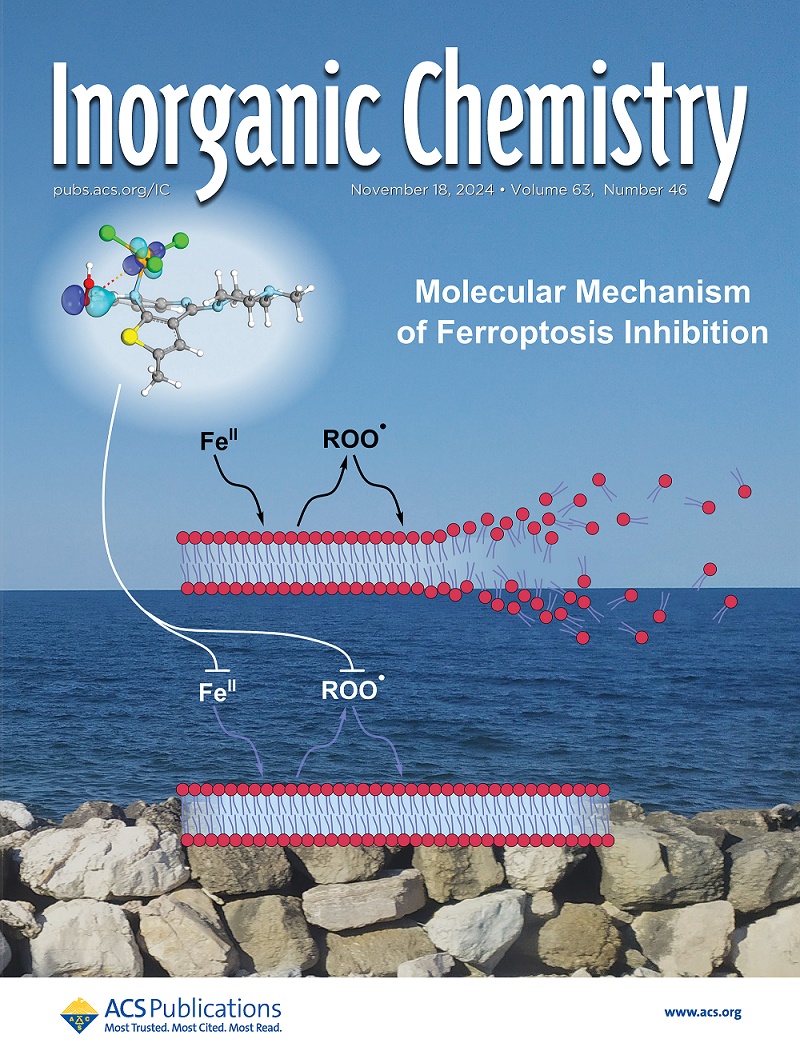二铝烯的结构和键解离变化:N,P-与N,N-双齿配体效应的比较DFT研究。
IF 4.7
2区 化学
Q1 CHEMISTRY, INORGANIC & NUCLEAR
引用次数: 0
摘要
在此,我们报告了一个全面的密度泛函理论(DFT)计算来研究由偕胺膦、偕胺酸盐和β-二氯基酸盐(BDI)配体支持的二铝烯的不同解离行为。计算表明,偕胺膦和偕胺酸配体通过与它们的铝基单体的动态平衡来稳定Al = Al双键。相反,BDI配体优先稳定单核Al(I),而不是二聚化。根据能量分解分析(EDA)和电荷分解分析(CDA),这种不同的行为归因于bdi稳定的铝基碎片之间泡利斥力的增强和轨道相互作用的减弱。值得注意的是,尽管氨基酸配体限制了N-Al-N咬角,但通过限制铝基单体变形和有效的配体-金属偶联,Al = Al键的稳定性得到了增强。与氢化氨基膦配体系统的系统比较进一步表明,配体-金属偶联主要通过氨基孤对和Al-Al核之间的空间排斥力来严格调节Al = Al键解离。本研究从特定配体体系中得到的关键配体参数为今后的二铝设计提供了理论基础。本文章由计算机程序翻译,如有差异,请以英文原文为准。
Structure and Bond Dissociation Variations in Dialumenes: A Comparative DFT Study on N,P- versus N,N-Bidentate Ligand Effects.
Herein, we report a comprehensive density functional theory (DFT) calculation to investigate the distinct dissociation behaviors of dialumenes supported by amidophosphine, amidinate, and β-diketiminate (BDI) ligands. Calculations reveal that amidophosphine and amidinate ligands stabilize the Al═Al double bond via a dynamic equilibrium with their aluminyl monomers. Conversely, the BDI ligand preferentially stabilizes mononuclear Al(I) species over dimerization. According to energy decomposition analysis (EDA) and charge decomposition analysis (CDA), this distinct behavior is attributed to the enhanced Pauli's repulsion and diminished orbital interaction between the BDI-stabilized aluminyl fragments. Notably, despite the constrained N-Al-N bite angle imposed by the amidinate ligand, the enhanced stability of the Al═Al bond emerges through limited aluminyl monomer deformation and effective ligand-metal conjugation. A systematic comparison with the hydrogenated amidophosphine ligand systems further demonstrates that the ligand-metal conjugation critically modulates Al═Al bond dissociation, primarily through steric repulsion between the amino lone pairs and Al-Al cores. These key ligand parameters derived from specific ligand systems in this study provide a theoretical foundation for future dialumene design.
求助全文
通过发布文献求助,成功后即可免费获取论文全文。
去求助
来源期刊

Inorganic Chemistry
化学-无机化学与核化学
CiteScore
7.60
自引率
13.00%
发文量
1960
审稿时长
1.9 months
期刊介绍:
Inorganic Chemistry publishes fundamental studies in all phases of inorganic chemistry. Coverage includes experimental and theoretical reports on quantitative studies of structure and thermodynamics, kinetics, mechanisms of inorganic reactions, bioinorganic chemistry, and relevant aspects of organometallic chemistry, solid-state phenomena, and chemical bonding theory. Emphasis is placed on the synthesis, structure, thermodynamics, reactivity, spectroscopy, and bonding properties of significant new and known compounds.
 求助内容:
求助内容: 应助结果提醒方式:
应助结果提醒方式:


